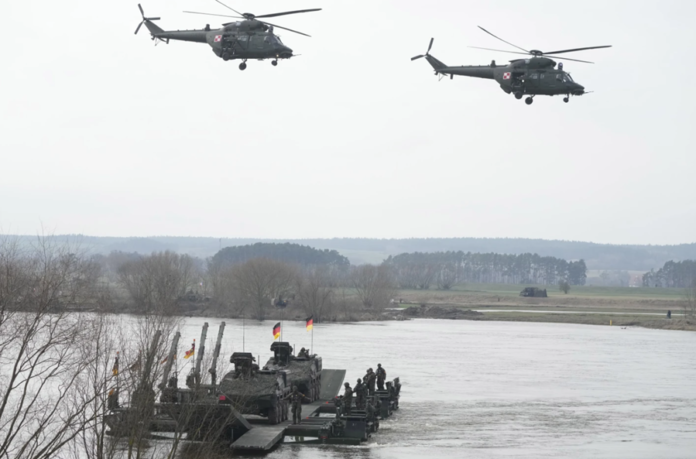Top European Union officials on Tuesday outlined ambitious plans to boost its defense industry at an unprecedented pace as the bloc seeks to respond to the threat posed by Russia’s war on Ukraine and a trans-Atlantic partner that could be wavering on its commitments to Europe, according to AP News.
For decades, EU nations have slumbered under the protective nuclear cover of the United States through the NATO alliance while their defense spending and crisis preparedness withered.
A first warning under Donald Trump’s presidency highlighted a lack of coordination and supplies that would be needed if European nations would ever have to defend themselves without Washington’s help.
Now, with an increasingly assertive Moscow, the need to increase defense is becoming ever clearer.
“After decades of underspending, we must invest more on defense, but we need to do it better and together,” said EU foreign policy chief Josep Borrell. “A strong, resilient, and competitive European defense industry is a strategic imperative.”
Russia’s invasion of Ukraine has exposed glaring weaknesses in Europe’s arms manufacturing capacities that were neglected in the wake of the 1989 fall of the Berlin Wall and the promise of a peace dividend in Europe.
So when Kyiv was badly in need of the most elementary ammunition to stave off Russian forces, European nations were caught out, unable to deliver what was asked and even promised, Reuters reports,
The realization that former President Trump might return to the White House and undermine support for Ukraine has also focused minds in Europe. EU heavyweights France and Germany have warned that the bloc must do more to protect itself.
And after years of go-it-alone defense strategies that left Europe divided despite high spending, the plan seeks to impose common strategies.
“Our defense spending goes to too many different weapon systems, primarily bought from outside the EU,” said EU Commission Vice President Margrethe Vestager. With defense budgets in EU member states rising, “we should invest better, which largely means investing together, and investing European.”
Under the proposals, the 27 member states will be invited to buy at least 40% of defense equipment together and make sure that 35% of the defense value represents internal trade by 2030.
The plans now go to the member states where they will be further negotiated.
The war in Ukraine spurred European nations to hike defense spending, and a lot of money is destined for the U.S. defense industry. Germany, for example, announced a 100 billion-euro upgrade of its armed forces, with a big chunk of the funds dedicated to U.S. F-35 fighter jets and transport helicopters.
While production is improving, the EU had aimed to be making 1 million artillery shells annually by now but is only making around half that figure. Officials now say that production could reach 1.4 million shells per year by the end of December.


